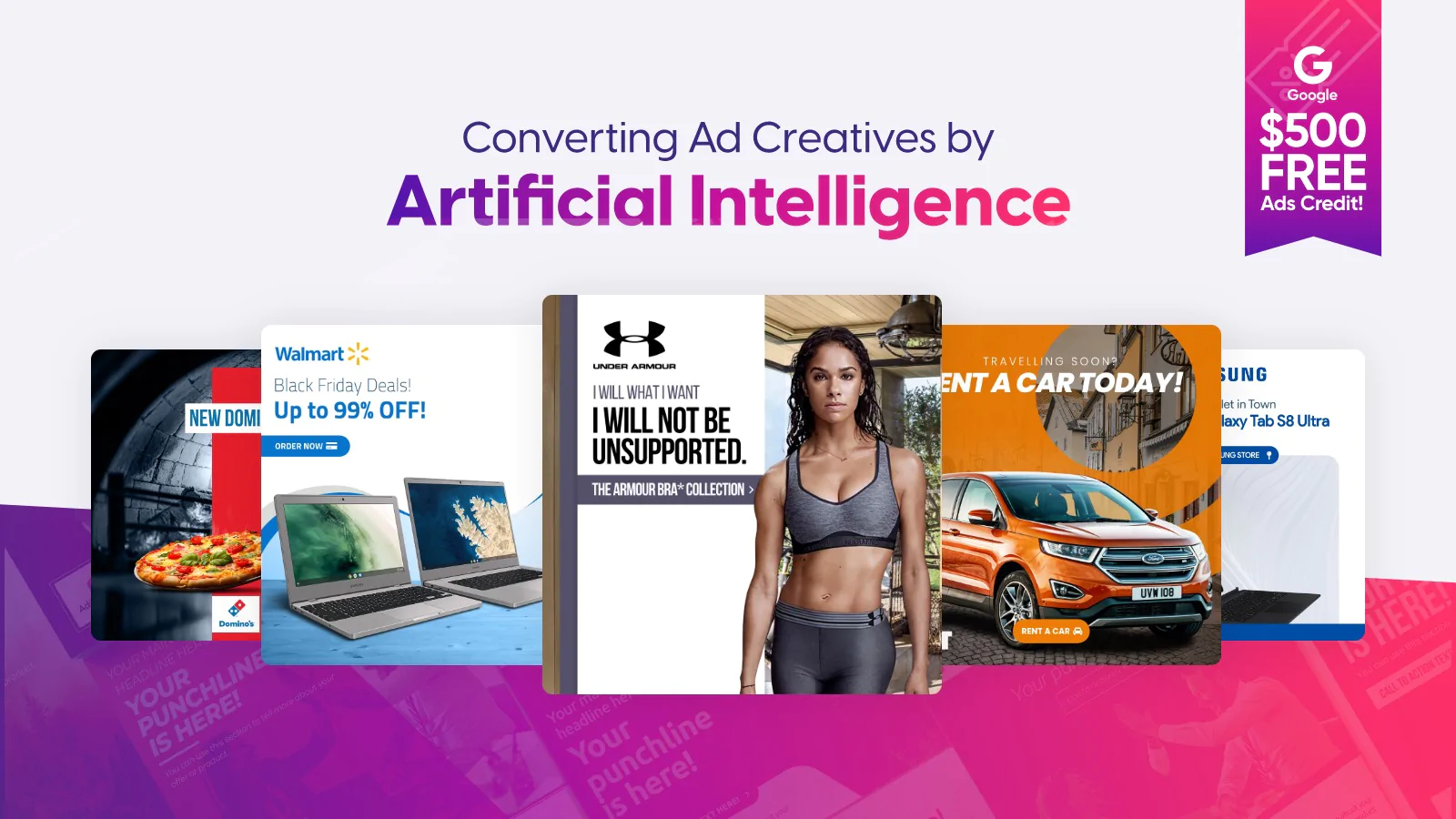Ad creative is one of the most important aspects of a successful online advertising campaign. Your ad creative is what will ultimately determine whether or not your target audience will engage with your ad, so it’s important to get it right. But what are the best practices for ad creative? How can you ensure that your ad creative is effective? In this blog post, we’ll share some ad creative best practices that you can use to create high-performing ad creative.
What is an ad creative?
There isn’t a specific definition for what an ad creative is. The different advertising platforms give a definition of their own. According to Google, “A creative is the ad served to users on a webpage, app, or other digital environment.“, while according to Facebook, “An ad creative is a visual element containing advertising data serving different campaign objectives.“.
But in general, an ad creative is a term used in online advertising to describe the components of an advertisement, including the title, text, images, and call to action.
Choosing the correct format for an ad creative
Different types of ad creative can include but are not limited to static images, GIFs, videos, and carousels.
When creating your social media ad, think of what your goal is. What do you want to achieve? This will determine the ad format you use. There are many different ad formats to choose from. Each format has its own advantages and disadvantages. The most common ad formats are: banner, headline, photo, video, interactive content, social merchandising, lead generation, and app install.
While there are many factors that influence the success of an ad, the ad’s format is certainly important. We’ve found that vertical ads (also known as skyscrapers) tend to perform the best overall.
This may come as a surprise if you think of standard display ads (such as banners) as being the most impactful. While banner ads are definitely important, over time we’ve found that vertical ads are more effective at driving conversions.
There are likely a number of factors that contribute to this finding, but we think one of the main reasons is screen space. Since most online shoppers have dozens (if not hundreds!) of tabs open in their browser, it can be challenging for them to focus on traditional banner ads. It can also be difficult to locate banner ads while scrolling through a site. In contrast, vertical ad placement makes it easy for customers to spot your brand. This extra visibility may contribute to the superior performance of skyscraper ads.
Another factor that contributes to the success of vertical ads is how this ad format fits into people’s browsing habits. When a consumer is interested in purchasing a product, they will often pull up multiple reviews and pricing information before making a decision. While reading reviews, consumers tend to scroll up and down on a page. Consequently, banner ads that run along the bottom of a website or horizontal banners tend to lose people’s attention very quickly. Conversely, vertical ads stand up and are immediately visible as soon as a consumer finishes scrolling. Additionally, when a consumer does focus on a vertical ad, they don’t have to move their eyes left and right to read text like they would with a horizontal ad. This means that vertical ads receive approximately 45 times more views per second than horizontal ads!
Tips for creating effective ad images
There are certain do’s and don’ts when it comes to creating images for your ads. Here is a list of all the best practices you should follow:
- Do use images. People are more likely to click on ads with images than those without. This is because images help convey information and influence perception. But make sure the image is relevant to your ad’s content.
- Don’t use flash or animation. These can potentially cause visibility issues for people with visual impairments. Also, studies show that ads with flash or animation receive significantly lower click-through rates (CTRs).
- Do use high-quality images. High-quality images stand out from the rest and attract higher CTRs. You can tell high-quality images by their resolution and lighting.
- Don’t use generic visuals or stock photos. These can make your ad look unoriginal and spammy, which will drive people away.
- You should always include your brand’s logo on ad images. Consumer research shows that people recognize and respond to brands’ logos on ads. If you don’t have a logo, you can make your ad stand out by creating one yourself.
- Research shows that ads with caption text receive 38% higher engagement rates than ads without text. So make sure to add caption text to your ad images. The text should explain what your ad is about.
- Do use data visuals. Data visuals, such as charts and graphs, are great for ad images because they help people understand a product or service. If you’re a data-driven company, you should definitely utilize this strength in your ads.
How to create great ad copy
Creating great ads starts with great ad copy and creative images. Advertisers large and small invest a lot of time and money into their ads, hoping they will stand out, drive conversions, and make an impact. But if the ad copy and image combination is ineffective, all that effort is wasted.
One way to avoid this is to start with a compelling hook. Your ad should compel people to click on what you’re advertising. What’s the quickest way to do this? Using a “curiosity gap”.
As Neil Patel explains, a curiosity gap is when you keep some information hidden from your audience but want to reveal it. You create a sense of mystery and anticipation by leaving little clues. Your audience wants to fill in the missing pieces, so they’ll be compelled to read/watch/click on your ad and find out what they’re missing.
It’s also important to add strong call to action to your ads. What kind of action do you want people to take? Buy a product? Download a guide? Submit a lead magnet? Use strong CTA such as
- Buy NOW!
- Download Now!
- Learn More!
- Shop Now!
This approach is particularly effective when your product or service has clear benefits and outcomes. In other words, if people can clearly see what they’ll get if they click on your ad, they’re much more likely to do so.
The takeaway
In conclusion, following these best practices for ad creative will help you create ads that are more likely to be effective. Keep your audience in mind, make sure your messaging is clear, and use strong visuals to grab attention. Use A/B testing to fine-tune your ads, and don’t be afraid to experiment to find what works best for you.





Leave a reply
You must be logged in to post a comment.